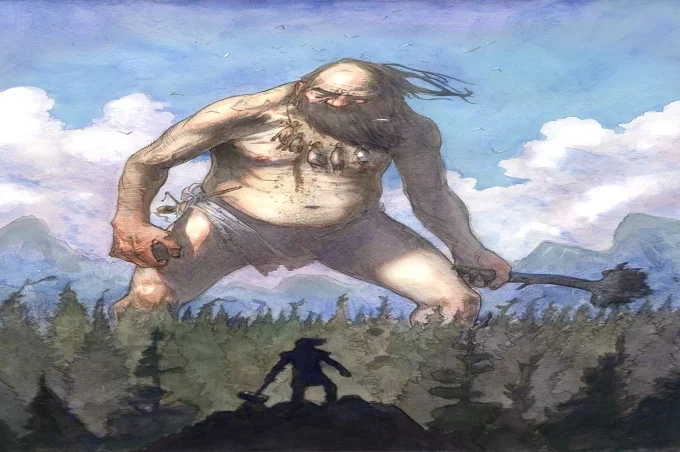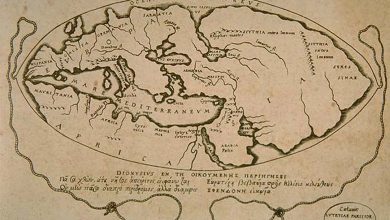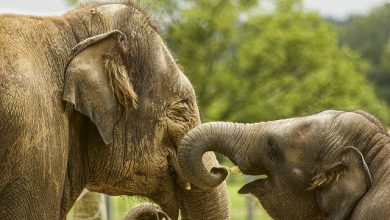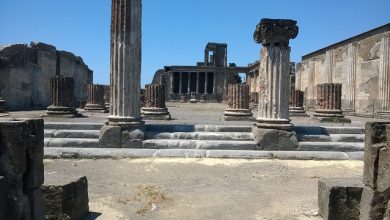Ancient giants: fiction or fact

Scientists are increasingly saying that we know nothing about our planet’s past. And all ideas about what kind of creatures inhabited it are extremely superficial. More and more archaeological discoveries force researchers to seriously debate that tens of thousands of years ago, the earth was inhabited by people or human-like creatures three to five meters tall or even more.
This would be unbelievable were it not for the ancient bones found by Austrian archaeologist Klaus Dona.
“In Ecuador, we found a ruined human skeleton. It is a human being, 7 meters 60 centimeters high,” says Klaus Dona.
A human heel bone made this claim. No animal, including monkeys, has bones of this kind.
“The second part that can be identified is the occipital bone. The lower part of the skull. It looks the same as in us humans. The only difference is the size – it’s five times bigger. If you consider that humans at the time were 1.50m to 1.60m tall, then five times bigger is exactly 7.6m,” Dona says.
When Klaus showed the remains to experts and medics, they were greatly surprised but confirmed that the bones could only belong to humans. The bones are more than 10 000 years old.
If giants did inhabit our planet, where did they go? The answer to this question may be given by a discovery made in Yakutia. Scientists found a mammoth that had lain in a permafrost layer for about 12 thousand years. The animal was perfectly preserved so that undigested food remained in its stomach. This means that the animal died instantly and not from starvation due to a sudden cold snap and the onset of ice, as previously thought. Perhaps it was some global catastrophe – an asteroid impact, for example – after which everything on the ancient earth changed beyond recognition.
“Modern paleontologists will tell you that in the history of life on earth, which began about 2 billion years ago, about 6 major catastrophes wiped out most specimens of those creatures that lived on earth. Such exterminations have occurred every few hundred million years, the most recent being the extermination of the dinosaurs,” says archaeologist Michael Cremo.
A recent discovery in Brazil is further proof of this. There, builders near Rio de Janeiro accidentally discovered another dinosaur unknown to science that lived on our planet. This dinosaur was a giant reptile. What exactly it looked like is still unknown. What we do know is that the animal ate grass.
Klaus Dona in Bolivia has made another strange discovery – buried people who are about 2 meters, 60 or 80 centimeters tall.
“The most interesting thing is that their skulls, unlike us homo sapiens, had a connecting line of three bones at the top. As they put it beautifully today, they looked like ‘eggheads.’ This is a completely unusual way of connecting the bones of the upper part of the skull. That is to say, these are by no means Neanderthals, Cro-Magnon, nor homo sapiens. It would be very interesting to determine the age of these skeletons and DNA analysis to determine what kind of people they are,” says the archaeologist.
It is generally accepted that modern humans evolved from apes, and Homo sapiens is the highest of our civilization. But then, how do we explain all these discoveries? After all, the bones of giants are not found only in Bolivia and Ecuador. In the summer of 2008 in Georgia, locals discovered huge remains of ancient man. The Director of the Institute of Paleobiology, Academician Abesalom Vekua, was very intrigued by the discovery.
“I learned about the discovery when someone from a television studio came to me and brought me bones – the lower part of the thigh bone and the upper part of the tibia. The bones matched each other. They were clearly bones of the same individual. The bones were quite large,” says Vekua.
It was clear at a glance that the creature was up to three meters tall.
In addition to leg bones, scientists have at their disposal a humerus bone, a jawbone, and the teeth of a giant. So there is no doubt that these are human bones. The news broke on all the TV channels a few years ago.
Scientists argue that dinosaurs evolved about 235 million years ago – long before humans. This means that no human had ever seen a living dinosaur. But recent discoveries by archaeologists have overturned conventional ideas about our past.
In Turkmenistan, not far from the village of Khojapil-ata, scientists discovered 2,500 fossilized dinosaur footprints. Such several footprints cannot be found anywhere else. The most incredible thing is that among numerous three-toed footprints of ancient dinosaurs, there were five-toed footprints of up to 60 centimeters in length. It has been calculated that the creature that left them must have been nearly 5 meters tall.
In Peru, near the town of Ica, granite stones with paintings have been discovered in the burial places of chiefs. They are engraved with pictures from the lives of ancient people.
“Among them are depictions of people coexisting with dinosaurs,” says a researcher of ancient civilizations and a Ph.D. in history.
In Mexico, near the village of Acambaro, in 1945, antiquities were discovered, which made you think about the correctness of the theory of human development. The Acambaro figurines, more than 30 thousand clay sculptures of dinosaurs. Among them are easily recognizable prehistoric reptiles and unknown winged animals, so reminiscent of European dragons. They are all depicted in motion with great accuracy. How did the ancients who made these images get an accurate idea of what the dinosaurs looked like?
The first dating of the figures showed that they were made 4,500 years ago. It is also claimed that several human skulls, the remains of a mammoth, and a horse from the Ice Age were discovered during the excavation.
Some scientists doubt the find’s authenticity, but the facts tell a different story. Many of the stone fragments show traces of erosion, suggesting that they have been buried underground for a long time. The figurines are also burnt in an open fire, which means that a lot of wood was needed to make them, which is now almost non-existent in the Akambaro area.
More recently, there is further evidence that humans or creatures very similar to you and me may have lived during the dinosaur era. On the Kathiawar Peninsula in the Arabian Sea, explorers in the deep ocean discovered in 1983 unusual, geometrically shaped stones. The hewn stones were not simply scattered across the seabed but seemed to have formed a complex underwater structure.
The perfect cut-out shapes could have been of artificial origin, as the scientists established the age of the stones. When scientists succeeded in determining the age of the find, it was hailed as the discovery of the century. The underwater ruins were found to be roughly 12 000 years old. After years of research and lengthy expeditions, the archaeologists even managed to create a three-dimensional computer model of the ancient structure, which was a harbor.
The officially accepted scientific theory is that about 12 000 years ago, humans were still very primitive. They couldn’t have built such structures out of stone—especially those of this enormous size without special machinery. Well, unless they were gigantic in height.
Once upon a time, everything on earth was gigantic. Trees could reach up to hundreds of meters. And mushrooms were as big as six to eight meters tall.
In May 2014, archaeologists discovered a dinosaur cemetery on an Argentine farm, 260 kilometers east of the town of Trelew. Scientists said the bones of a Titanosaurus, the most gigantic dinosaur that ever lived on earth, were found among the remains. It was 20 meters tall and weighed 77 tonnes. That’s the weight of 14 African elephants.
The answer to why it was so big has been revealed to scientists by a common amber. The ancient deposits of this mineral contain air bubbles. It turned out that there was more oxygen in the atmosphere during the dinosaur age than today – about 33% compared with 21% today.
Experts Robert Berner of Yale University and Landis of the American Geological Society has calculated that the level of oxygen in the atmosphere has changed drastically over the planet’s history. It rose to 35 percent about 300 million years ago, then dropped, then rose again to 25 percent during the Cretaceous period, 100 million years ago. And life looks different in an atmosphere with 30 percent oxygen.
Modern science has claimed that our planet collided with a huge meteorite 65 million years ago for a long time. About 10 kilometers in size, a space body crashed into the Yucatan Peninsula in Mexico, resulting in volcanic eruptions and several kilometers high tsunamis. Pillars of dust and soot obscured the sunlight for several decades, gradually cooling the planet and turning it into an icy globe. The dinosaurs that inhabited the earth did not survive the terrible catastrophe, and their huge population disappeared without a trace.
“Look at the moon, all beaten up. And the earth is just as battered. Only we have it all hidden under forests, under swamps. There are a lot of known craters like that. One of these meteorites fell between Australia and South America. And it caused a gigantic tsunami that threw marine life deep into the South American continent, which mixed with the continental animals. But this did not cause any extinction,” says Yuri Bolotsky, a paleontologist at the Institute of Geology and Nature Management, Far East Branch of the Russian Academy of Sciences.
Mexico is home to the Chicxulub crater. Its diameter is 180 kilometers, 65 million years old. It is this crater, according to scientists, was formed after a meteorite fell, which led to the death of all the dinosaurs. Recently, however, American seismologists have created a unique model that replicates the earth’s shape from 65 million years ago. They calculated the height of mountains and the depth of oceans, which allowed them to trace how the seismic waves generated by the meteor impact moved across the planet. Their calculations showed that the impact of the cosmic body on the earth was 2 million times more powerful than the explosion of a hydrogen bomb. Still, even this power would not have been enough to cause irreversible processes on the entire planet, leading to the complete disappearance of all life.
More and more scientists agree that the hypothesis of a meteorite attack does not stand up to criticism. Indeed, as the geological evidence shows, similar cosmic bodies have repeatedly fallen on our planet. One of the last happened about 35 million years ago: according to scientists, a small-time interval fell, at least three large meteorites. The first of these fell on the territory of Siberia, resulting in the formation of the famous crater Popigai, a diameter of about 100 kilometers. The second hit the eastern part of North America. This created a giant crater called the Chesapeake Crater. The third meteorite, scientists believe, fell in Toms Canyon, not far from the present-day city of Atlantic City. Its crater was about 20 kilometers in diameter. But what was the result? Despite the massive bombardment of the earth, no significant cataclysms or mass extinctions occurred 35 million years ago.
But if not a falling celestial body, what killed the dinosaurs? Another theory has it that a massive volcanic eruption caused a huge release of gases and ash into the atmosphere, resulting in a cold snap.
Today, however, this theory seems fantastic to many scientists. After all, as the latest calculations of climatologists show, the process would have been long-lasting, allowing the dinosaurs to adapt to the changing conditions easily. But this did not happen.
Today, some researchers believe increased gravity was the main cause of the extinction of the dinosaurs on earth.
The most fearsome solitary predator of the dinosaur age is thought to have been Tyrannosaurus. It was 15 meters long, almost 7 meters high, and weighed about 8 tonnes. This monster needed at least 60 kilograms of meat per day, and this is why he was dubbed the most feared killer of ancient reptiles.
But, over time, external factors have changed the appearance of the dinosaurs. Its bones became smaller, its brain grew larger, and its whole body was covered by a thick coat of feathers or fur. A very recent discovery in Chita province has confirmed this theory. Paleontologists discovered a whole graveyard of dinosaurs that didn’t resemble their brethren. Scientists found that the bodies of these dinosaurs were covered in feathers. But the most incredible thing is that these dinosaurs were simply Lilliputians compared to all other species.
What’s more, paleontologists have discovered that the dinosaurs they found belonged to the carnivore family. But who could these little monsters hunt? The bloodthirstiness of these packs of small dinosaurs was not inferior to that of the ferocious Tyrannosaurs, a fact certain paleontologists from England, who discovered the world’s smallest dinosaur in the south of the country. Fossil reptile was less than 40 centimeters in length and, according to experts, in life, weighed about 200 grams. Although scientists only had a posterior cervical vertebra in their possession, they could describe the creature roughly. It appeared to be a predator, with its body partially covered in feathers.
Following these findings, some researchers have suggested that small dinosaurs were one of the main reasons why their giant counterparts became extinct. Larger beasts had difficulty keeping track of their young, a problem that smaller predators took advantage of. Smaller predators took advantage of this by feeding on the eggs and offspring of the dinosaurs.
Some scientists believe that gravity is constantly increasing on our planet. And if this is true, it could mean that humanity, just like the dinosaurs, is at risk of dying under its onslaught. Scientists calculate that if gravity were to increase, the face of the human race of the future would change dramatically. If this theory is believed, then giant humans, whose bones have been found in various parts of the planet, may have become extinct, like the dinosaurs. Other bipeds of much smaller size have simply displaced them.




